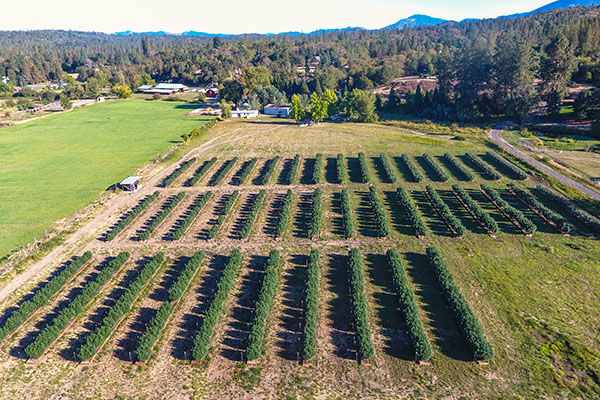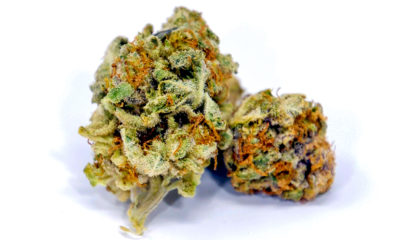
Cannabis
Assessing the Oregon Cannabis Climate
Cultivators in Oregon faced both environmental and legislative challenges during the 2016 grow cycle.
For Oregon cannabis enthusiasts, 2016 was an exciting year. The state began issuing its first recreational marijuana licenses, and larger-than-life farms started sprouting up. Sungrown producers were poised for their biggest hauls yet, but between Mother Nature and the state legislature, it was a challenging season for just about everyone growing under the sun.
While Oregon offers a variety of different licensing options for recreational indoor and outdoor cultivation, its Tier II outdoor license holders are offered the most ground; with unlimited plant count and up to 40,000 square feet of flowering canopy space. This huge bump up from the state’s medical system maximum of 48 plants had some ambitious producers planting over 20x more.
In Southern Oregon, a region known for high-grade sungrown, Michael Horner jumped on the opportunity to make one of his long-time dreams come true.
“I always looked at the vineyards in Sonoma County [California], with their long rows of perfectly trellised grapes, and waited for the day I could do the same with cannabis,” Horner said.
Horner and his team at Greenway Grown converted a forgotten pick-your-own-peach orchard just outside of Grants Pass into a flourishing field of 760 female plants.
“I wanted to create something pleasant to look at, to set an example for an industry generally hidden from public eyes,” Horner said.
Unfortunately, the 2016 outdoor growing season was less than pleasant to many. Microscopic russet mites ravaged gardens with little plausible remedy and near record rains and howling winds trampled plants in late September and early October, just at the onslaught of harvest. Producers were forced pull early and cram their dry rooms or risk huge forfeitures to mold. Some farms estimated losses in the thousands of pounds.
Despite this, the biggest challenges growers faced were at the hands of the state.
In the beginning of the year hundreds of applications flooded the Oregon Liquor Control Commission, the agency left in charge of recreational marijuana licensing and distribution. Understaffing and red tape left farmers without their licenses until late in the growing season.
“We were told we would have our license in two months,” said Horner. “We applied in May but did not have our final inspection until late August, it was nerve wracking.”
Weekly changes to the writing of the law added further hurdles, as the state had to alter and clarify many parts of the law. Oregon also became the first to mandate laboratory testing for all cannabis and related products. In early October regulators added a further surprise, lowering tolerance levels on a long list of pesticides, including commonly used and organically listed pyrethrins, piperynol butoxide and spinosad.
It was tough pill to swallow for farmers who found their entire crops had to be destroyed. The stringent testing requirements also caused huge bottlenecks at laboratories, which had to receive state accreditation, and work with new and problematic equipment. With fewer than 20 labs in the state, turn over rates for samples went from weeks… to much longer.
“I drove my samples five hours to Portland, hand delivered them, and paid a pile of money,” said Jeramiah Johnson of Glory Daze Botanicals. “We went well over a month before I finally heard we passed.”
Johnson was told the sensitive equipment required to test for pesticides was difficult to maintain. With a flood of producers forced to get their products tested, heavy use had taken its toll on labs statewide.
“When all said and done, it costs about $35 per pound for testing, and we have to have everything tested, even our trim,” Horner said.
Fortunately for Horner and Greenway Grown, each shied away from any pesticide use and passed all their testing requirements as well, but face over $50,000 in testing costs.
Licensed dispensaries suffered from similar hold ups, finding for the first time they were unable to keep their shelves stocked with tested product.
“The number of people coming in to offer their products to us has significantly decreased, many are too scared to even test their products for fear of state seizures or site inspections,” said Wes Cross, co-owner of Antheia Dispensary.
Cross, like many others, is still waiting for the state approval of their recreational retail license for the Grants Pass facility. Strict guidelines and on-site inspections mean a lot of hoops to jump through, but in the meantime Antheia continues to provide for medical patients and caregivers.
But as spring awaits just around the corner, Oregonians are hoping for a brighter future in the blossoming industry.
“We survived the storm, and it worked out as planned for the most part,” Horner said. “Now I just can’t wait for summer.”
TELL US, have you grown marijuana? What challenges have you faced?






















